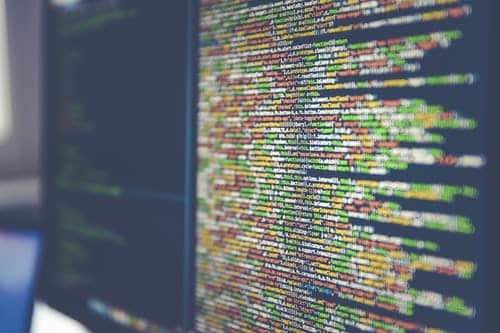What are the best techniques for creating realistic terrain in military simulation games?

In the realm of military simulation games, the phrase "terrain matters" carries significant weight. The realism of the terrain in these games affects not only the aesthetics but also the gameplay, strategy, and overall player experience. It's not just about creating visually stunning landscapes; it's about incorporating real-world data and environmental factors that will influence the game's outcomes. This article will explore the best techniques employed by game developers in creating more authentic, engaging, and strategic military simulation terrains.
1. Using Geographic Information System (GIS)
Before delving into the details of game development, it's essential to understand the significance of real-world data. Geographic Information Systems (GIS) play a crucial role in gathering and analyzing geographical data, which provides insight into the physical characteristics of the terrain.
A lire aussi : How can machine learning be used to detect and prevent cheating in online multiplayer games?
Incorporating GIS into game development allows developers to create more realistic and accurate terrain. This includes details such as elevation, vegetation, hydrology, and other natural features. Using GIS data in military simulations helps create an environment as close to the real world as possible, which can significantly enhance the strategy and decision-making aspects of the game.
GIS also helps in environmental analysis, such as understanding the effects of weather changes and seismic activity on the terrain. This can be particularly useful in military wargames, as these environmental changes can influence the game's progression.
Cela peut vous intéresser : What are the challenges of implementing real-time voice translation in international multiplayer games?
2. Procedural Generation Techniques
Creating a realistic terrain is not a one-time thing. It's a dynamic process that involves constant updates and improvements. One way to achieve this is through procedural generation techniques.
Procedural generation involves the use of algorithms to create terrain, instead of manually designing every aspect. This technique allows for a lot of variety and randomness, making each game experience unique. It's particularly useful in large-scale wargames where creating every bit of the environment manually would be impractical and time-consuming.
The quality of terrain produced through procedural generation depends on the sophistication of the algorithms used. More advanced algorithms can take into account factors like erosion, climate, and tectonic activity to produce incredibly realistic environments.
3. Using Photogrammetry
Photogrammetry is a technique that uses photographs to measure and map the environment. It's been increasingly used in video game development for creating highly detailed and realistic 3D models of terrain.
In the context of military training simulations, photogrammetry can be invaluable. It can provide highly accurate representations of real-world locations, which can be used for strategic analysis and planning. Furthermore, photogrammetry can capture details that might be overlooked in manual design or procedural generation, adding another layer of realism to the environment.
Photogrammetry, combined with GIS, can create a game environment that's not just visually appealing, but also highly accurate and faithful to real-world locations.
4. Real-time Dynamic Weather and Lighting
Real-time dynamic weather and lighting are other crucial factors that contribute to the realism of the game terrain. They not only affect the visual aspect of the game but can also influence the gameplay.
Dynamic weather systems can change the game environment in real-time, affecting visibility, mobility, and strategy. For instance, rain might make certain terrains slippery and difficult to navigate, while fog could reduce visibility, impacting players' decisions.
Similarly, real-time lighting can create a more immersive environment. It can replicate the changing time of day and the impact of natural light on visibility and perception of the terrain.
5. Artificial Intelligence and Machine Learning
The use of artificial intelligence (AI) and machine learning is another cutting-edge approach in creating realistic terrain for military simulation games. AI can analyze a vast amount of data to generate terrain that mimics real-world environments.
Machine learning, a subset of AI, can learn from previous data and improve over time. For instance, it can analyze player behavior and responses to different terrain types and modify the environment accordingly for increased challenge and engagement.
In military training simulations, AI and machine learning can create a dynamic, evolving environment that adapts to the players' strategies and techniques, providing a consistently challenging and engaging experience.
6. Incorporating Geospatial Intelligence
Incorporating geospatial intelligence in military simulation games is another technique that can significantly enhance the authenticity of the game terrain. Geospatial intelligence, often referred to as GEOINT, involves the use and analysis of geographic data to derive actionable information.
In the context of military simulation games, the integration of GEOINT can provide a more comprehensive understanding of the physical landscape, offering significant advantages in decision-making and strategy formulation. Geospatial data, such as topography, land use, and infrastructure, can be incorporated into the game terrain to offer a more accurate representation of real-world environments.
For instance, the use of geospatial intelligence can help players understand the potential challenges and opportunities posed by different terrain types. The presence of a hill, for instance, may provide a defensive advantage in a battlefield scenario. Conversely, marshlands could impede movement and slow down the progress of military personnel in the game.
Such integration of geospatial intelligence can make the gameplay much more strategic and challenging, enhancing the utility of military simulation games as a tool for virtual training and real-life scenario analysis.
7. Harnessing Simulation Software
The use of advanced simulation software is another vital technique in creating realistic terrain for military simulation games. Simulation software allows developers to model and visualize 3D terrains based on source data such as GIS or satellite imagery. The software can generate exceptionally detailed and accurate representations of real-world environments on a large scale.
Moreover, simulation software can incorporate physics-based effects, such as erosion or weather changes, to create dynamic, evolving terrains. This can significantly enhance the realism and interactivity of the game environment, making the gaming experience more immersive and engaging.
Furthermore, simulation software can facilitate real-time terrain analysis and modifications, which is fundamental in interactive simulations. This allows the game environment to adapt and evolve in response to player actions and strategies, thereby offering a more challenging and realistic gaming experience.
In summary, creating realistic terrain in military simulation games is a complex task that requires the integration of various techniques and technologies. From leveraging the power of Geographic Information Systems and photogrammetry to harnessing the potential of artificial intelligence and geospatial intelligence, each technique plays a crucial role in enhancing the authenticity of the game environment.
The goal is not just to create visually appealing terrains but to create environments that can replicate the complexities and nuances of the real world. This includes the dynamic nature of the environment, the influence of weather and light, and the strategic implications of different terrain types.
The effectiveness of these techniques lies in their capacity to provide a highly realistic, interactive and engaging platform for virtual training and practice. By pushing the boundaries of realism and interactivity, military simulation games can offer invaluable tools for training simulation, strategic analysis, and decision-making processes.
Therefore, as technology continues to evolve, we can expect even more sophisticated and realistic military simulation environments in the future. This will not only improve the gaming experience but also enhance the efficacy of military training and wargame design.
